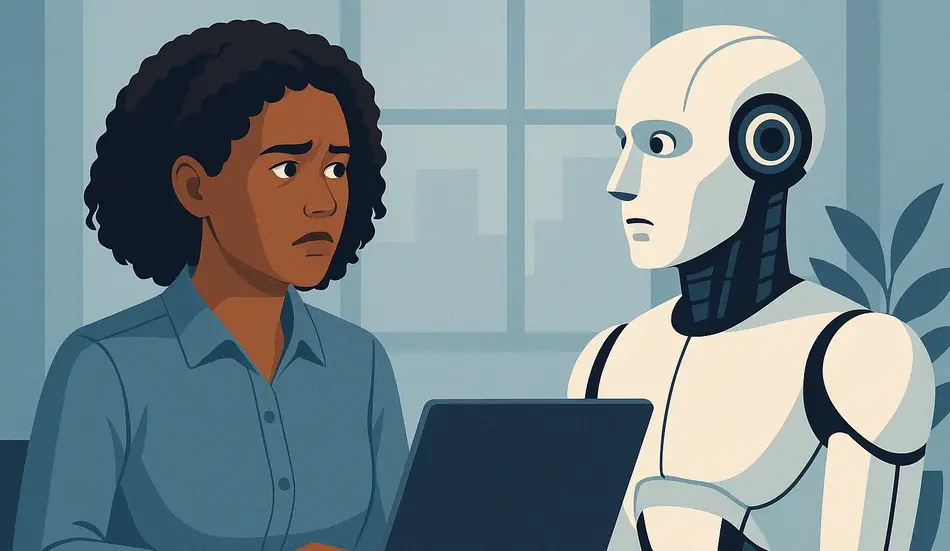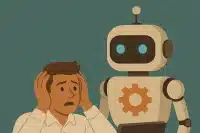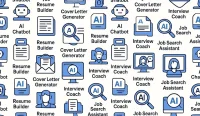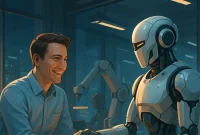For the last several decades, when U.S. college graduates left universities, they could expect their dedication would lead to real, solid jobs. Well, it looks like that promise is weakening in 2025, as while total unemployment is close to historic lows, there are more and more new entrants to the labor force especially in white-collar jobs who cannot get their first jobs.
The culprit, many economists and jobseekers say, is a combination of economic uncertainty, shifting hiring practices, and the disruptive rise of artificial intelligence.
While jobs have not disappeared altogether, this is possibly due to fewer entry-level roles positions being available, as these positions have been lost to automation or have been consolidated into more senior-level jobs. AI has not wiped out entire industries overnight but is in the process of removing the bottom of the employment ladder that traditionally has served as the stepping-stone for entry, especially for young workers.
The Changing Nature of Entry-Level Work
For many years, entry-level jobs were about apprenticeship to some degree. You learned while doing and contributed to tasks that were usually pretty basic. Regardless of industry, legal, the financial industry, software development or marketing, a new hire at the junior role was primarily completing the repetitive, lower stake assignments, while gradually becoming more competent.
Now, AI is increasingly performing those very functions:
- In software engineering, generative AI tools like GitHub Copilot and ChatGPT can handle boilerplate code and bug fixes, tasks that once trained junior developers.
- In marketing and communications, AI systems can draft press releases, social posts, and even full campaign copy.
- In law, document review and contract analysis—traditionally the work of first-year associates—are now automated with high accuracy.
- In customer service, chatbots and automated ticketing systems reduce the need for junior support staff.
The result: companies need fewer junior employees, and when they do hire, they want them to arrive with advanced skills already in hand.
The Human Toll
Anecdotes are piling up:
- A recent computer science graduate in California described applying to more than 100 jobs with no success, noting that many “entry-level” postings required two to three years of experience plus AI familiarity.
- Another graduate in journalism found roles that once welcomed interns or assistants now ask for mastery of AI editing tools as a baseline skill.
- Even business school graduates are finding that analyst roles in finance—long a staple of post-MBA life—are increasingly automated by algorithmic systems.
This creates a frustrating paradox: young workers need experience to get jobs, but the very jobs designed to provide that experience are disappearing.
The Robot-vs-Robot Hiring Arms Race
AI is not only reshaping the jobs themselves—it is transforming how people apply for them.
- Employers are using AI-powered applicant tracking systems (ATS) to scan resumes, filter applications, and auto-reject candidates.
- Applicants, in turn, are using AI tools to generate resumes, cover letters, and interview prep materials tailored to algorithmic screenings.
The result is a robot-vs-robot arms race, where human interaction is minimized until late in the process—if it occurs at all. For new graduates, breaking through this wall of automation is increasingly difficult.
Economic Factors at Play
While AI is a major disruptor, it is not the only force reshaping the entry-level market:
- Tech Industry Contraction: After years of explosive growth, tech firms have downsized. Layoffs in 2023–24 created a backlog of experienced workers competing for fewer roles.
- Slower Job Creation: Nationwide, job creation has decelerated, averaging just 35,000 new jobs per month in mid-2025, the weakest since the pandemic.
- Employer Caution: With tariffs, inflation, and Fed policy uncertain, companies are cautious about expanding headcount.
These factors compound AI’s effects, making the path to stable employment especially narrow for younger workers.
Generational Divide
One striking feature of this disruption is who it impacts most.
- Younger workers (22–25) face disproportionate displacement. Their jobs are the easiest to automate and the hardest to secure.
- Older workers, already in mid-level or senior positions, are less affected. Many even benefit, using AI to enhance productivity and defend their value.
In effect, AI is widening the gap between generations in the workforce. Gen Z finds the ladder missing its first rungs, while Gen X and Millennials consolidate higher positions.
Sectoral Impact
- Tech & Software: Entry-level coding and QA roles are the hardest hit. Firms now expect hires to immediately contribute at higher levels.
- Finance: Junior analyst work, such as data modeling, is increasingly automated. Still, opportunities remain in client-facing roles.
- Healthcare: Automation assists with admin tasks, but demand for human nurses, doctors, and aides remains high.
- Retail & Hospitality: AI reduces cashier and booking roles, though turnover ensures openings still exist.
The biggest losses, however, are in white-collar office jobs, the very roles once considered the safe choice for degree holders.
Need to Hire Talent Across These Sectors?
Post your job on WhatJobs and reach thousands of qualified candidates today.
Post a Job Now →Policy and Education Responses
Experts are calling for systemic changes to address the entry-level crisis:
- Expanded Training Programs: Universities must integrate AI literacy into curricula, ensuring graduates arrive with the skills companies expect.
- Public-Private Partnerships: Governments and firms can create apprenticeship programs that blend AI tools with human oversight.
- Incentives for Hiring Juniors: Subsidies or tax breaks for firms that hire and train recent graduates could counterbalance automation pressures.
- Career Path Innovation: Companies must rethink career ladders, ensuring junior staff have meaningful opportunities to grow in an AI-augmented workplace.
Historical Parallels
Every wave of technological disruption has displaced some jobs while creating others:
- The Industrial Revolution wiped out many artisanal trades but expanded factory work.
- The Computer Revolution replaced typists but created programming and IT fields.
- The AI Revolution is unique in targeting white-collar entry-level roles—the very jobs that once shielded workers from automation.
The challenge, as in past revolutions, is ensuring displaced workers can transition into the new opportunities created.
What Workers Can Do
Career experts suggest several strategies for navigating this turbulent market:
- Develop AI-Complementary Skills: Learn to use AI tools effectively, rather than compete with them.
- Focus on Soft Skills: Leadership, communication, and empathy remain human strengths.
- Seek Growth Industries: Healthcare, green energy, and skilled trades continue to expand.
- Network Beyond Algorithms: Personal referrals can bypass AI screening filters.
FAQs
Q1: Is AI eliminating all jobs?
No. AI is automating tasks, especially at the entry level, but it is also creating demand for new skills. The issue is not joblessness overall but reduced access for new graduates.
Q2: Why are younger workers most affected?
Because their roles are often the easiest to automate and they lack the experience to compete for higher-level positions.
Q3: Are any sectors safe from AI disruption?
Healthcare, skilled trades, and fields requiring physical presence or human empathy remain less vulnerable.
Q4: How can graduates improve their chances?
By learning AI tools, networking actively, and targeting growth industries rather than oversaturated tech roles.
Q5: Could policy changes help?
Yes. Expanded training, subsidies for entry-level hiring, and reimagined career ladders could soften AI’s impact.
Conclusion
AI is not eliminating work—but it is eliminating work as we knew it for entry-level workers. By automating what used to be the lowest rung on the ladder of work, AI threatens to trap young people outside of the system entirely because they cannot accumulate the experience they need to get on-ramp to rewarding work.
Policymakers, employers, and educators, the challenge is simple: preserve the possibility of upward mobility in the automation phase. For workers, the challenge is whether they will adapt to survive. Jobs of the future will emerge, but the pathway to the jobs will alter, starting with surviving the “AI entry-level squeeze.”




